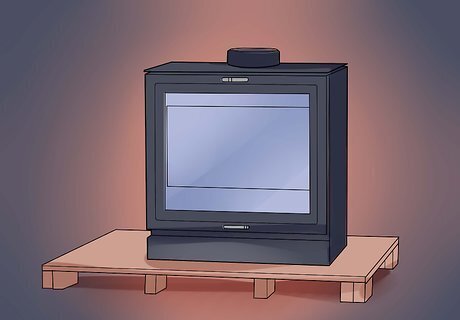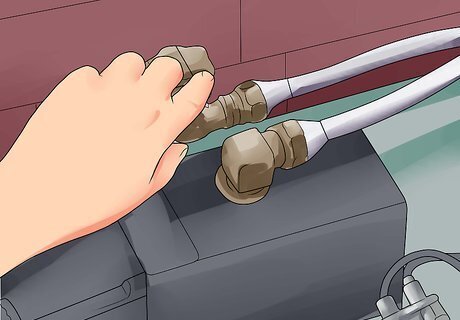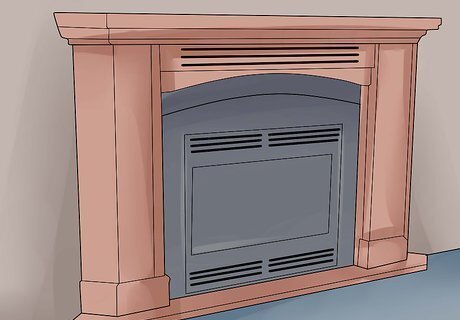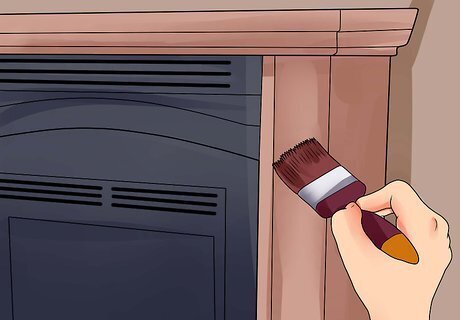
views
X
Research source
Even better, with a direct-vent gas fireplace no sizable chimney is required, making it possible to install a gas fireplace quickly and easily into many existing buildings. Because you'll be working with gas, however, it's important to have a good understanding of how to install a gas fireplace before beginning any installation project.
Gathering Materials For Your Gas Fireplace

Pick a location for the fireplace. Be sure to consider a variety of factors when deciding where your fireplace should go. The fireplace should enhance the design and character of the room but it should also be placed where installation of a gas line, an electrical circuit, and an exhaust pipe will be most convenient if at all possible. It is usually easiest to install stand alone gas fireplace on an exterior wall, as the venting pipe can go straight out the wall. Also remember that the pipe will need to go between studs, so you should take that into consideration when picking an exact location.

Order a gas fireplace. There are many styles to choose from. It may be helpful to go to a fireplace showroom, so that you can see all the different styles that are available to you. It may be easiest to order all the parts you will need for your exhaust piping when ordering your fireplace. This will include pipe between the fireplace and the wall, a wall-pass-through, and exterior pieces for the pipe.

Build or purchase a platform for the fireplace. The actual fireplace unit is fairly small and it is dangerous to have it sit directly on the floor. To get the fireplace off of the floor, you will need to build a platform. Use materials that match the décor of the room but that will create a non-combustible surface for the fireplace to sit on. This could include masonry or ceramic tiles for example. Fireplace companies may have pre-made platforms for you to purchase. It may be most convenient to order a platform when you order your fireplace. Be sure to consult any manufacturers instructions regarding how the platform should be installed and what it can be made from. You will also need to allow for any clearance around the fireplace that is required by the manufacturer's instructions. This will probably include clearances from combustible surfaces in the room and positioning so that the exhaust pipe can be appropriately installed.
Preparing the Area For Your Gas Fireplace

Place the fireplace in its final position. When you have found the spot in the room where you want to place the fireplace and placed the platform, set the fireplace on top of the platform. Make sure that it has the clearance it needs from any combustible materials and that its position looks good in the room.

Install the exhaust piping at the top, or back, of stove. Attach as much as you can up to the section that goes through the wall. This will allow you to figure out where the hole through your wall should go exactly. You will begin by attaching a straight pipe to the starting collar on top of the fireplace using stove cement. Different fireplaces require different gaskets to completely attach the pipe to the collar. Be sure to follow manufacturer's instructions for this step. Once you are able to determine where the hole for the exhaust pipe will go, use a pencil to trace a circle around the pipe at the wall. Then move the fireplace platform and the fireplace out of the way so you can have easier access the wall when cutting the hole.

Cut the hole for the direct venting system. This hole should be the size of the wall-pass-through that came with you ordered with your stove. The pass through is designed to keep all heat away from combustible wall materials, making it a very important part of keeping risk of fire damage at a minimum. Before just cutting all the way through your wall, make sure that there are no electrical lines or pipes in the area you are cutting out. Use a drywall saw to carefully cut a square hole around the tracing you made. Remove the drywall so that you can see into the wall, making sure all utilities are clear from the area. Drill a hole from the inside through the outside wall to show you where the corners are on the outside of the wall. If your wall-pass-through is square, it's easiest to drill a small hole at each corner. On the outside wall, use the appropriate tools based on your materials to complete the hole you started on the inside.

Frame the inside edges of the opening with lumber. The framing you insert will create a base on which the pass-through can be attached. Follow manufacturer's instructions when determining materials and size to make the finished hole.
Installing Your Gas Fireplace

Insert the wall-pass-through. Inside the house, put high-temperature caulk on the inside surfaces of the hole you created. Install the wall-pass-through by pushing it into the hole, which will press it into the caulk and make a seal around the pass-through. Then screw it into place.

Complete the direct venting system. Install all remaining piping inside and outside of the house. Place the stove back onto the platform and secure all piping between the stove and the wall-pass-through, always following manufacturer's instructions. Use high-temperature caulk to seal the area around the pipe and the fire stop. Outside, install the exterior fire stop and drip cap using appropriate tools for your type of exterior wall.

Hire licensed contractors to install and connect the gas line and electricity. Depending on where you placed your fireplace, you may need to run new electrical outlets and you will almost certainly need to run a new gas line. Unless you are qualified to handle these steps yourself, hire a licensed contractor to complete them.

Build an optional frame around your fireplace. While many gas fireplaces do not need a mantle or frame around them, some will. A decorated lumber frame, including surrounds, mantel, hearth, and any wood decorations you want, will help the fireplace and surrounding area to match the rest of the room. See How to Install a Fireplace Mantel for more information on how to build a frame around your new fireplace. Remember to follow manufacturer's recommendations for maintaining space between the fireplace and the frame. This is very important!

Finish the project. Replace any drywall you removed during the project and paint or otherwise finish the fireplace frame and wall to make it match the room.

















Comments
0 comment